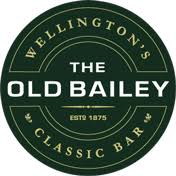Fleet Prison And Rules Of The Fleet, , London, England
Wikipedia links for
Fleet Prison And Rules Of The Fleet, , London, England
[Fleet Prison And Rules Of The Fleet] [] [London] [England]
Notes:
Fleet Prison was a notorious London prison. It was built in 1197 and situated off what is now Farringdon Street, on the eastern bank of the Fleet River after which it was named. It came into particular prominence from being used as a place of reception for persons committed by the Star Chamber, and, afterwards, for debtors and persons imprisoned for contempt of court by the Court of Chancery. In 1381, during the Peasants' Revolt, it was destroyed, and in 1666, during the Great Fire of London, it was burned down, but was rebuilt both times.
During the 18th century, Fleet Prison was mainly used for debtors and bankrupts. It usually contained about 300 prisoners and their families. Some inmates were forced to beg from their cells that overlooked the street, in order to pay for their keep. At that time prisons were profit-making enterprises. Prisoners had to pay for food and lodging. There were fees for turning keys or for taking irons off, and Fleet Prison had the highest fees in England. There was even a grille built into the Farringdon Street prison wall, so that prisoners might beg alms from passers-by. But prisoners did not necessarily have to live within Fleet Prison itself; as long as they paid the keeper to compensate him for loss of earnings, they could take lodgings within a particular area outside the prison walls called the "Liberty of the Fleet" or the "Rules of the Fleet". From 1613 on, there were also many clandestine Fleet Marriages.
The head of the prison was termed the warden, who was appointed by Letters patent. It became a frequent practice of the holder of the patent to farm out the prison to the highest bidder. This custom made the prison long notorious for the cruelties inflicted on prisoners. One purchaser of the office, Thomas Bambridge, who became warden in 1728, was of particularly evil repute. He was guilty of the greatest extortions upon prisoners, and, according to a committee of the House of Commons appointed to inquire into the state of English gaols, arbitrarily and unlawfully loaded with irons, put into dungeons, and destroyed prisoners for debt, treating them in the most barbarous and cruel manner, in high violation and contempt of the laws. He was committed to Newgate Prison, and an act was passed to prevent his enjoying the office of warden.[1]
During the Gordon Riots in 1780 Fleet Prison was again destroyed and rebuilt in 1781-1782. In 1842, in pursuance of an act of parliament, by which inmates of the Marshalsea, Fleet and Queen's Bench Prisons were relocated to the Queen's Prison (as the Queen's Bench Prison was renamed), it was finally closed, and in 1844 sold to the corporation of the City of London, by whom it was pulled down in 1846.
 Parish : Latitude: 51.5164016, Longitude: -0.1048731
Parish : Latitude: 51.5164016, Longitude: -0.1048731Matches 1 to 9 of 9
| Family |
Marriage |
Family ID | ||
|---|---|---|---|---|
| 1 | Goodin / Maw | 12 Feb 1735 | Fleet Prison And Rules Of The Fleet, , London, England | F22345 |
| 2 | Maw / Bennett | 6 Nov 1742 | Fleet Prison And Rules Of The Fleet, , London, England | F22336 |
| 3 | Maw / Bulling | 3 Dec 1732 | Fleet Prison And Rules Of The Fleet, , London, England | F22344 |
| 4 | Maw / Child | 21 Jul 1748 | Fleet Prison And Rules Of The Fleet, , London, England | F22365 |
| 5 | Maw / Mannen | 19 Feb 1736 | Fleet Prison And Rules Of The Fleet, , London, England | F22363 |
| 6 | Maw / Penny | 27 May 1701 | Fleet Prison And Rules Of The Fleet, , London, England | F22346 |
| 7 | Maw / Prond | Dec 1735 | Fleet Prison And Rules Of The Fleet, , London, England | F22361 |
| 8 | Ridge / Maw | 19 Jul 1733 | Fleet Prison And Rules Of The Fleet, , London, England | F6889 |
| 9 | Wignall / Mow | 25 Feb 1727 | Fleet Prison And Rules Of The Fleet, , London, England | F6424 |
Matches 1 to 1 of 1
| Family |
Alt. Marriage |
Family ID | ||
|---|---|---|---|---|
| 1 | Maw / Bulling | 3 Dec 1732 | Fleet Prison And Rules Of The Fleet, , London, England | F22344 |


















